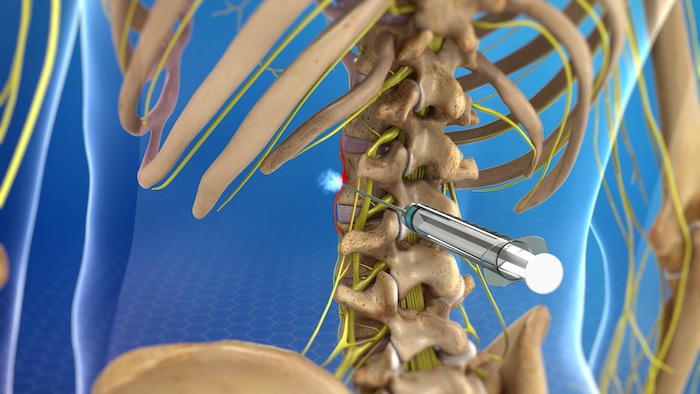
Significantly Reducing Lower Back, Leg, & Foot Pain
Lumbar sympathetic injections can determine if the sympathetic nerves in the lumbar (lower) spine are the cause of your pain issues.
Lumbar Sympathetic Injection Facts & Information
If you are suffering from pain or weakness in your lower back, legs, or feet, you know how these symptoms can have a major impact on your quality of life.
Lumbar sympathetic injections can determine if the sympathetic nerves in the lumbar, or lower, spine are the cause of your problems and treat the inflammation in order to relieve the pain.
What are Lumbar Sympathetic Injections?
Sympathetic nerves are responsible for a variety of functions in the body such as blood pressure, temperature regulation, blood flow, and more. Sometimes a sympathetic nerve may be unnecessarily stimulated, causing blood vessels to constrict and resulting in poor circulation to a limb. When a problem with the sympathetic nerves on the sides of the spine in the lower back occurs, you can experience pain and weakness in your lower extremities.
Lumbar sympathetic injections are successful in treating relatively common conditions such as complex regional pain syndrome or shingles.
Lumbar sympathetic injections are an important diagnostic test to determine if sympathetic nerves in the lower back are causing your pain. But the injections are also a treatment, providing long-lasting relief.
A pain specialist, guided by fluoroscopy (x-ray imaging), initially injects a small amount of contrast dye to ensure the injection will flow as desired to the targeted tissue of sympathetic nerves. Once confirmed, the physician injects a local anesthetic and a corticosteroid medication into the area, most often at the second or third lumbar vertebrae.
How Long does it Take?
Lumbar sympathetic injections are performed on an outpatient basis and typically require 20 minutes, followed by a brief observed recovery time.
How Often Should this Procedure be Done?
Up to three injections may be given within a six-month time frame. Usually, the injections are performed two to three weeks apart. A set of three injections is the norm; however, you may gain considerable relief after the first or second injection. In that instance, further injections may not be necessary.
What are the Expected Results?
Lumbar sympathetic injections can provide relief in the affected extremity minutes after the procedure. Usually, additional injections are needed for extended relief.
Immediately following the procedure, you should not drive for several hours because you may experience temporary numbness or weakness in a lower extremity. It’s recommended that you take it easy the day of the procedure, but return to your usual activities the following day. Although you might have some soreness for one to two days, the benefit from these injections will typically occur a few days following the procedure.
Is There a Longer Lasting Therapy?
In addition to lumbar sympathetic injections, a radiofrequency procedure may be recommended to offer prolonged relief that you may not otherwise achieve. Radiofrequency uses heat created by a special generator to desensitize specific nerves and interfere with their ability to transmit pain signals. A radiofrequency procedure typically provides relief for 6 to 12 months, and for some up to two years and beyond.
Another option might be spinal cord stimulation, which uses a small implanted electrical device to interrupt pain signals to the brain. The device is usually permanent, although it can be easily removed.
Precision Pain Care and Rehabilitation has two convenient locations in Richmond Hill – Queens and New Hyde Park – Long Island. Call the Richmond Hill office at (718) 215-1888, or (516) 419-4480 for the Long Island office, to arrange an appointment with our Interventional Pain Management Specialist, Dr. Jeffrey Chacko.













